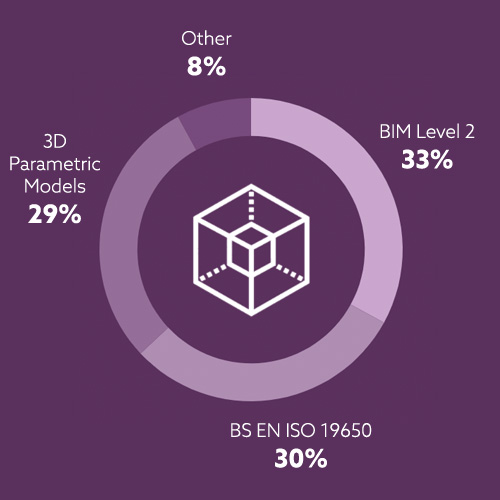A solid majority, 71%, say that they have adopted BIM. Another quarter have yet to do so, but plan to within the next five years. Only 5% have no intention of using BIM.
Adoption among consultants is highest, at 75%, and higher again among architectural practices: 81%.

